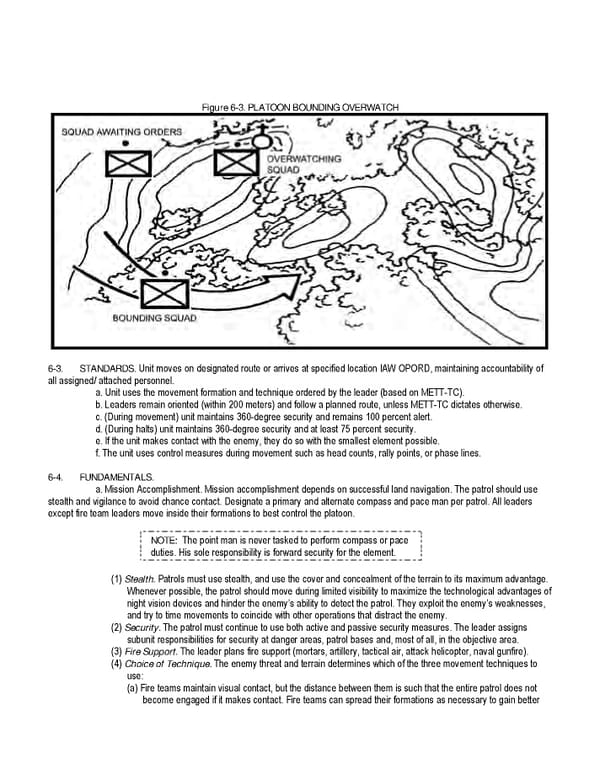Figure 6-3. PLATOON BOUNDING OVERWATCH 6-3. STANDARDS. Unit moves on designated route or arrives at specified location IAW OPORD, maintaining accountability of all assigned/ attached personnel. a. Unit uses the movement formation and technique ordered by the leader (based on METT-TC). b. Leaders remain oriented (within 200 meters) and follow a planned route, unless METT-TC dictates otherwise. c. (During movement) unit maintains 360-degree security and remains 100 percent alert. d. (During halts) unit maintains 360-degree security and at least 75 percent security. e. If the unit makes contact with the enemy, they do so with the smallest element possible. f. The unit uses control measures during movement such as head counts, rally points, or phase lines. 6-4. FUNDAMENTALS. a. Mission Accomplishment. Mission accomplishment depends on successful land navigation. The patrol should use stealth and vigilance to avoid chance contact. Designate a primary and alternate compass and pace man per patrol. All leaders except fire team leaders move inside their formations to best control the platoon. NOTE: The point man is never tasked to perform compass or pace duties. His sole responsibility is forward security for the element. (1) Stealth. Patrols must use stealth, and use the cover and concealment of the terrain to its maximum advantage. Whenever possible, the patrol should move during limited visibility to maximize the technological advantages of night vision devices and hinder the enemy’s ability to detect the patrol. They exploit the enemy’s weaknesses, and try to time movements to coincide with other operations that distract the enemy. (2) Security. The patrol must continue to use both active and passive security measures. The leader assigns subunit responsibilities for security at danger areas, patrol bases and, most of all, in the objective area. (3) Fire Support. The leader plans fire support (mortars, artillery, tactical air, attack helicopter, naval gunfire). (4) Choice of Technique. The enemy threat and terrain determines which of the three movement techniques to use: (a) Fire teams maintain visual contact, but the distance between them is such that the entire patrol does not become engaged if it makes contact. Fire teams can spread their formations as necessary to gain better
 Ranger Handbook Page 103 Page 105
Ranger Handbook Page 103 Page 105